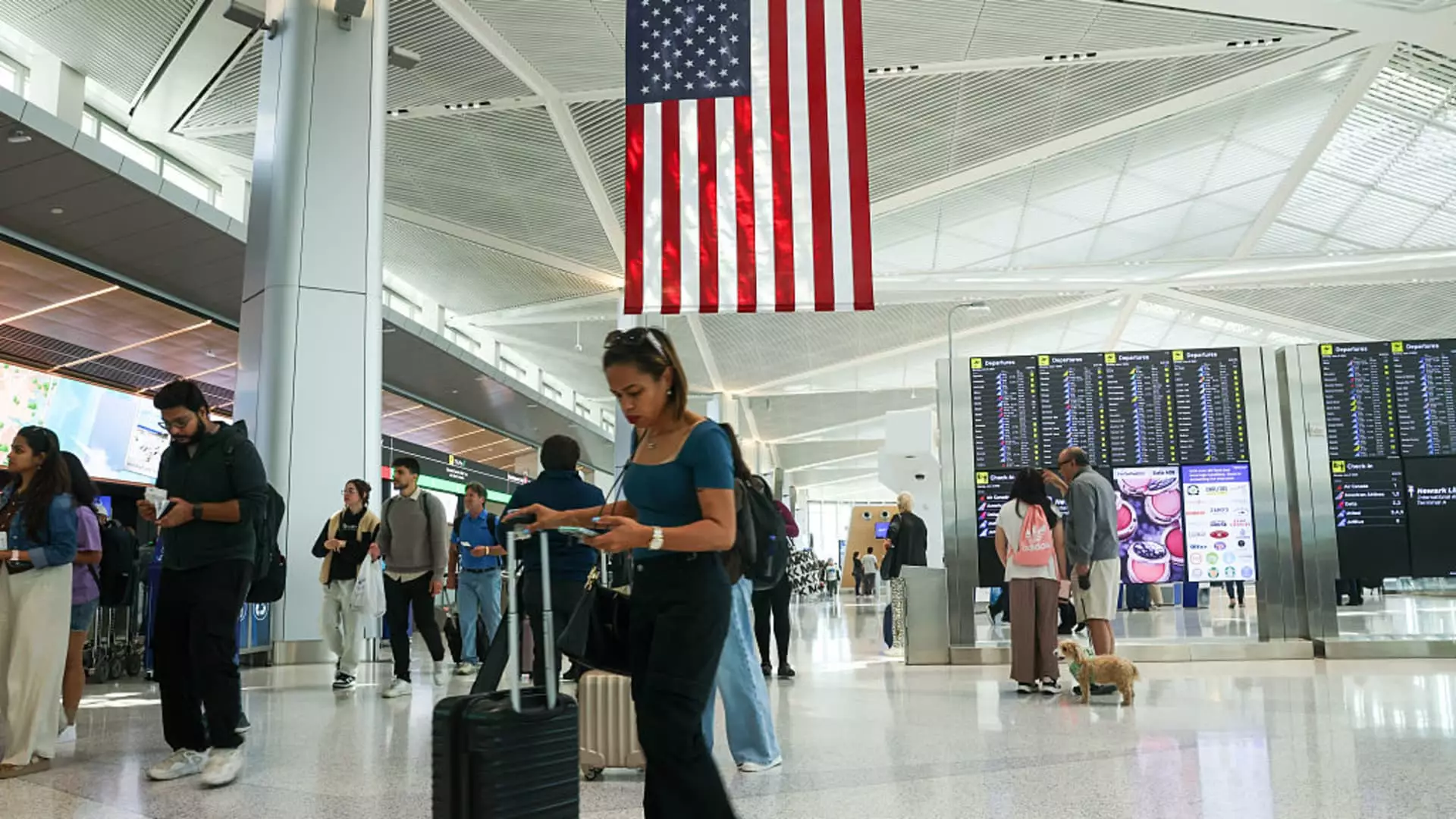Every July 4, millions of Americans pack their bags, dreaming of holiday celebrations and tropical escapes. This annual surge fuels the airline industry’s hopes for a lucrative peak season. Yet beneath this seemingly vibrant picture lurks a troubling reality: the foundation of travel demand is fragile, and airlines are painfully aware that the apparent summer spike may be more illusion than reality. Despite elevated passenger counts expected this week, the broader outlook for the industry remains clouded and uncertain, riddled with contradictions and persistent doubts.
The perception that airfares are on the rebound or even stabilizing is misleading. Instead, the data signals a cautious, even precarious, recovery. Domestic round-trip prices averaging $265 are among the lowest since 2021, and with fewer travelers flying year-round, airlines face a paradox—they see peaks but not sustainable growth. This current lull in demand exposes the vulnerabilities of airlines, which have yet to see a consistent, meaningful rebound. The summer “sale” prices are not a sign of confidence but rather a desperate attempt to fill seats in a market weakened by economic headwinds and shifting consumer behaviors.
Economic Crosscurrents and Political Headwinds
The airline industry is caught in a perfect storm of economic ambiguity and geopolitical uncertainty. The recent downturn in demand is not coincidental but rather a reflection of fragile economic stability. US inflation reports show reductions in airfares, fueling misconceptions of a comeback. Yet these figures gloss over the core issues—fewer overseas visitors, inflation-driven costs, and unpredictable tariffs. Airlines like Delta, American, and Alaska have already pulled their forecasts for 2025, signaling a lack of confidence in an environment that remains volatile.
This hesitation is rooted in broader economic and political factors. Tariffs, trade tensions, and uncertain international travel policies create an unstable backdrop for airlines that depend heavily on global demand. Moreover, international travel, which has traditionally buoyed big carriers, displays mixed signals. While flights to Europe have become more affordable, domestic travel has yet to fully recover. The 4.3% rise in international flights sounds promising but is overshadowed by declining fares and inconsistency in demand patterns. It became clear: the industry’s optimism is superficial, masking deeper structural issues that threaten future stability.
The Fragile State of Airline Profitability
Profits for airlines are still heavily concentrated in the second and third quarters, yet recent data indicates that the second quarter will not dominate as before. Airlines are trimming unprofitable routes and reducing capacity on off-peak days, suggesting that the industry is silently bracing for a downturn. This move signifies a recognition of underlying weaknesses—airlines are less confident about sustained demand and are already preparing for leaner times.
Carriers are watching consumer spending metrics closely. The drop in air travel-related spending by nearly 12% in June highlights waning consumer enthusiasm. Credit card data tells a story of hesitation—families and business travelers alike are spending less on air travel, a trend that is unlikely to reverse unless broader economic conditions improve. Airlines are betting on capacity cuts and strategic adjustments rather than a sudden surge in demand, revealing a sober approach driven by cautious realism rather than optimism.
International Travel: A Double-Edged Sword
While transatlantic flights provide some solace, their success is far from the robust strength of pre-pandemic years. Fares to Europe, though down significantly from last year, are now comparable to 2019 levels, signaling price competition rather than growth. Meanwhile, Asian flights remain more expensive, and the decline there whispers of an industry still hesitant to fully rebound in global markets. These international metrics demonstrate that the industry’s global recovery remains uneven, and reliance on international travel is a risky gamble.
The easing of prices for international trips is a double-edged sword. It offers a temporary uptick in travel volume but risks further price erosion if airlines overcompensate for sluggish demand. For the industry, there is no solid, sustainable growth—only a patchwork of fluctuating markets and tactical price cuts. This creates a precarious environment where profits remain elusive, and long-term planning is fraught with uncertainty.
A Critical Reflection on the Industry’s Condition
In the grand scheme, the airline industry’s current state is emblematic of a fragile recovery—one built more on superficial signs of activity than on genuine, durable demand. The optimism of summer fares and increased traveler numbers masks a cautious reality: airlines are operating amidst declining profitability, economic headwinds, and geopolitical uncertainty. While the industry booms in the short term, it remains fundamentally vulnerable to shifts in consumer confidence and global stability.
As an observer with a center-right perspective, I see these developments as a wake-up call. The industry cannot rely on short-lived fare discounts and temporary demand spikes to sustain itself. Instead, it must confront its structural weaknesses—overcapacity, dependence on international markets, and volatile consumer sentiment. Without a decisive shift towards increased efficiency, diversified revenue streams, and strategic resilience, the airlines are merely treading water, vulnerable to the next wave of economic or geopolitical shocks. The current summer surge, therefore, should not be mistaken for triumph but recognized as a fragile respite amid ongoing turbulence.

